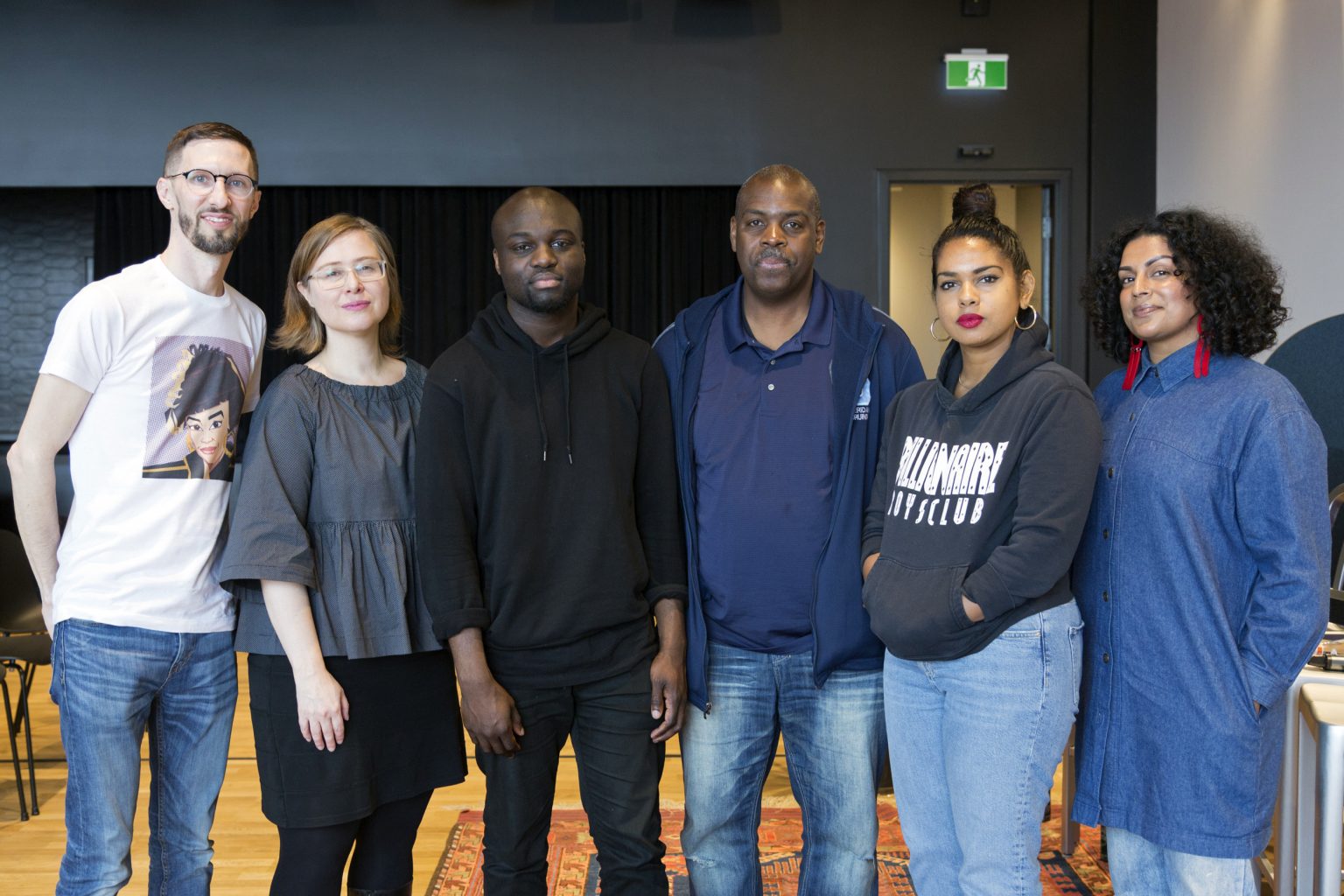The ongoing challenge has been to find a way to properly bridge the real and digital worlds that equally occupy our lives. Earlier this year, “CONVENE: Space for Creatives – Cultural Institutions in a Digital Age” took place at Launchpad (a relatively new hub for creative entrepreneurs in Toronto). Its goal was to examine the role of cultural institutions in the modern era and how they should interact with both up-and-coming and historical structures.
The line-up included Nick Davis of the CBC, Umbereen Inayet from the City of Toronto (Nuit Blanche Toronto), Natasha Singh of Shopify, Cathy Gordon from the Luminato Festival and Kazeem Kuteyi of New Currency. The discussion was moderated by Chris Penrose, founder of CONVENE which served as a jumping-off point for some fascinating dialog as creatives aim to add and facilitate value across the board.
Throughout the conversation, a central theme revolved around a cultural institution as, “an organization within a culture/subculture that works for the preservation or promotion of culture,” with examples including public broadcasters, museums, art galleries, and large-scale festivals. These platforms can bring a level of validity and economic opportunity for creators, the scale at which they are able to present work, or the ability they have to preserve and share work for generations.
In particular, we addressed the nature of the relationship between outsiders and these cultural institutions. While the simplistic narrative is that there are these powerful gatekeepers sitting on heaps of resources that are ignoring all of the talent outside of the status-quo and traditional career pathways, our conversation surfaced that there is a much more complex reality to this relationship.
Some highlights from our conversation:
- Umbereen Inayet (City of Toronto), discussed expanding the definition for the conversation: “There’s two types of cultural institutions now. There’s buildings, brick and mortar, and there’s people.”
- Nick Davis (CBC), spoke on the importance of holding strong to what got you in the door: “We went after you for a particular reason. Maintain your style and remind us, you came to me because I did this, and this is what I’m trying to bring here because you guys don’t have this.”
- Cathy Gordon (Luminato Festival), emphasized that going it alone can only get you so far: “If you know your voice isn’t the one that is going to get heard, then who is someone that you can approach that can be your supporter in the room?”
- Kazeem Kuteyi (New Currency), reminded us to keep the long-game in mind: “Maybe don’t even pitch to the cultural institution yet. Maybe just have something to show first. I think that’s really important.”
- Natasha Singh (Shopify), spoke on the base sentiment that helps access, build and transform cultural institutions: “Support your friends. If they’re artists, if they’re creatives, pay for the thing. Buy a ticket to their event. Buy their merch. Whatever it is, support them and that will go a long way.”


After the CONVENE conversation about the role of cultural institutions in a digital age, MAEKAN followed-up with Chris Penrose (CONVENE founder) and New Currency Founder and MAEKAN Member Kazeem Kuteyi. We had a series of questions that continued the dialog in a more granular focus.
What is the relationship at hand between outsiders and the cultural institutions?
Chris: I think that there is a recognition of the need to evolve inside of institutions and the keywords are diversity, representation, digital, youth, millennials. Vivek Shraya was on CBC “Q” recently and spoke about this where he said, “we are in this moment where a lot of arts institutions are understanding the need for diversity, but what’s happening is that they are like, ‘hey, you’re Brown, tell us about your experiences of racism, and hey, you’re trans, tell us about how hard it is.’
From the perspective of people outside of institutions, I think that they are increasingly being seen as irrelevant in terms of content. I’m passionate about accessing and evolving cultural institutions, but in the conversations I have, for the most part, there seems to be apathy and a lack of interest in and awareness of what’s going on in those spaces.
By sticking with old formulas for so long, they have created a degree of alienation, and have usually opened the doors in a tokenistic way. In a lot of cases, it feels like DIY spaces feel more relevant in terms of content, and the cultural institutions are patronized in spurts, like when there is a particular show, installation or event that generates a lot of excitement.
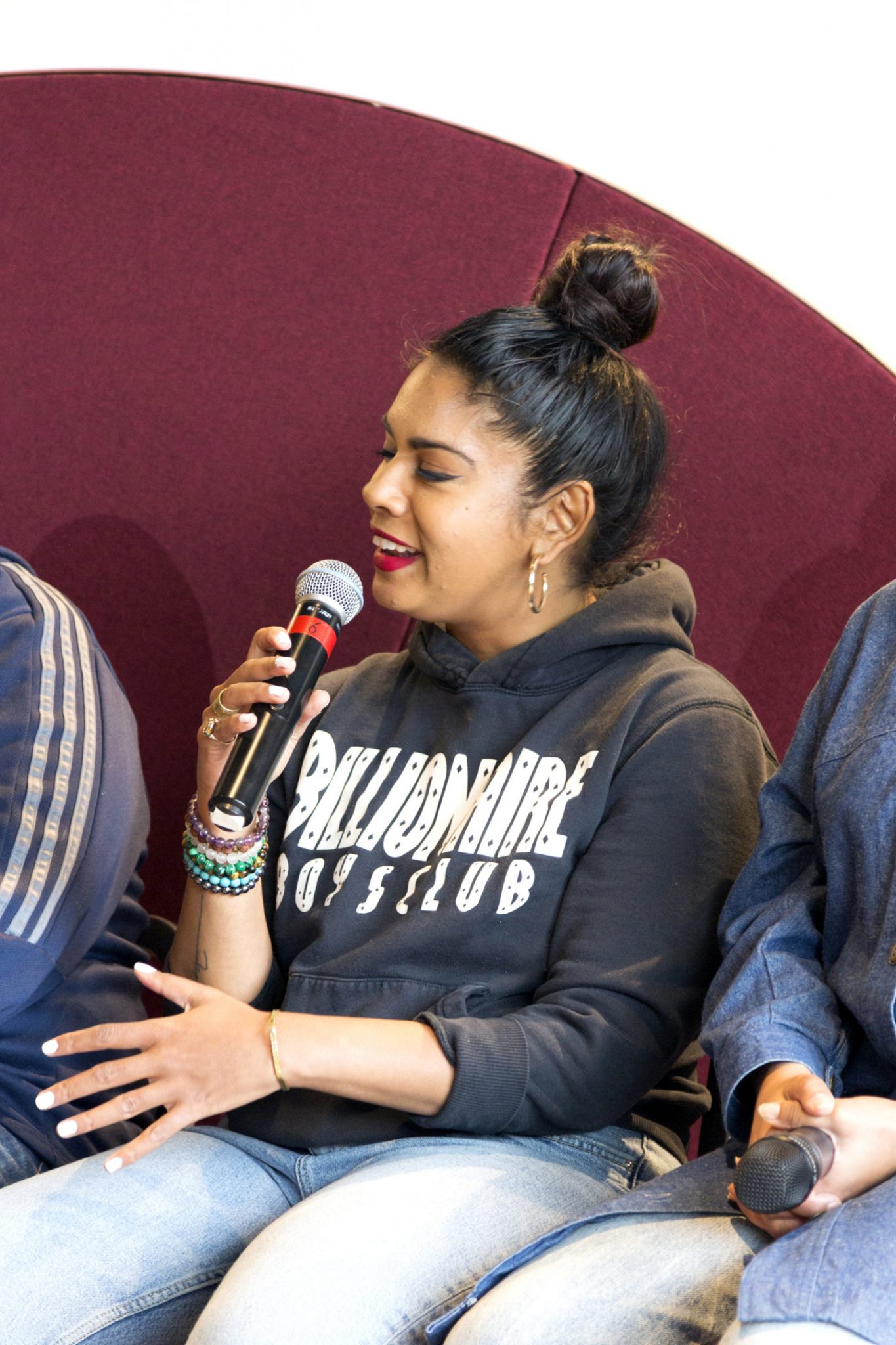
Umbereen Inayet, Nuit Blanche Toronto
“There’s two types of cultural institutions now: there’s buildings, brick and mortar, and there’s people. I’ve experienced both sides of things. I would say cultural institutions are basically systems of power. So when you want to get in, you definitely want to understand what are those systems.”
I think in those cases, it’s more about the content for people, and not as much about where it’s taking place and who it is putting it on. Whether you go to a particular show you are interested, and never see anything else they offer, or you are in the building and check out what you came to see without connecting with anything else that was already in the building, like their permanent collection.
While there doesn’t seem to be a high level of interest, I do think people know the value of a major cultural institution as a platform. It’s like you might not care all that much about the Oscars, Grammy’s or Juno’s, but if someone whose work you love gets one (especially when it is someone you know personally), it matters.
Ultimately, I think the relationship is simple though. The cultural institutions want showcase and create what they see as the best work in a given field and to be successful with audiences. Outsiders want to be able to create and show work at the scale, level of quality, credibility and relative permanence that rarely exist in DIY spaces.
Kazeem: I think we’re in a situation where outsiders and cultural institutions somehow don’t understand each other. We’re not using the same language or the same codes to operate, therefore it creates a barrier between us. We need each other to operate within society, to provide something new, whether that be in the context of music, art or sharing information, but the systems of power within institutions slows everything down. In my “millenial” mind, the idea has to be executed now.
I’m not willing to wait. Therefore people like myself will create our own opportunities, our own platforms or art shows, parties with the hope that we make enough noise to attract these institutions.
“You pitch ideas to the things that you like. And when you pitch, you’re going to get your name and ideas in front of the people that actually have freelance money. We have a lot of freelancers who contribute and that’s mostly how a lot of people get into CBC; they pitch ideas to show. Shows need ideas every day — we are in the ideas business.”
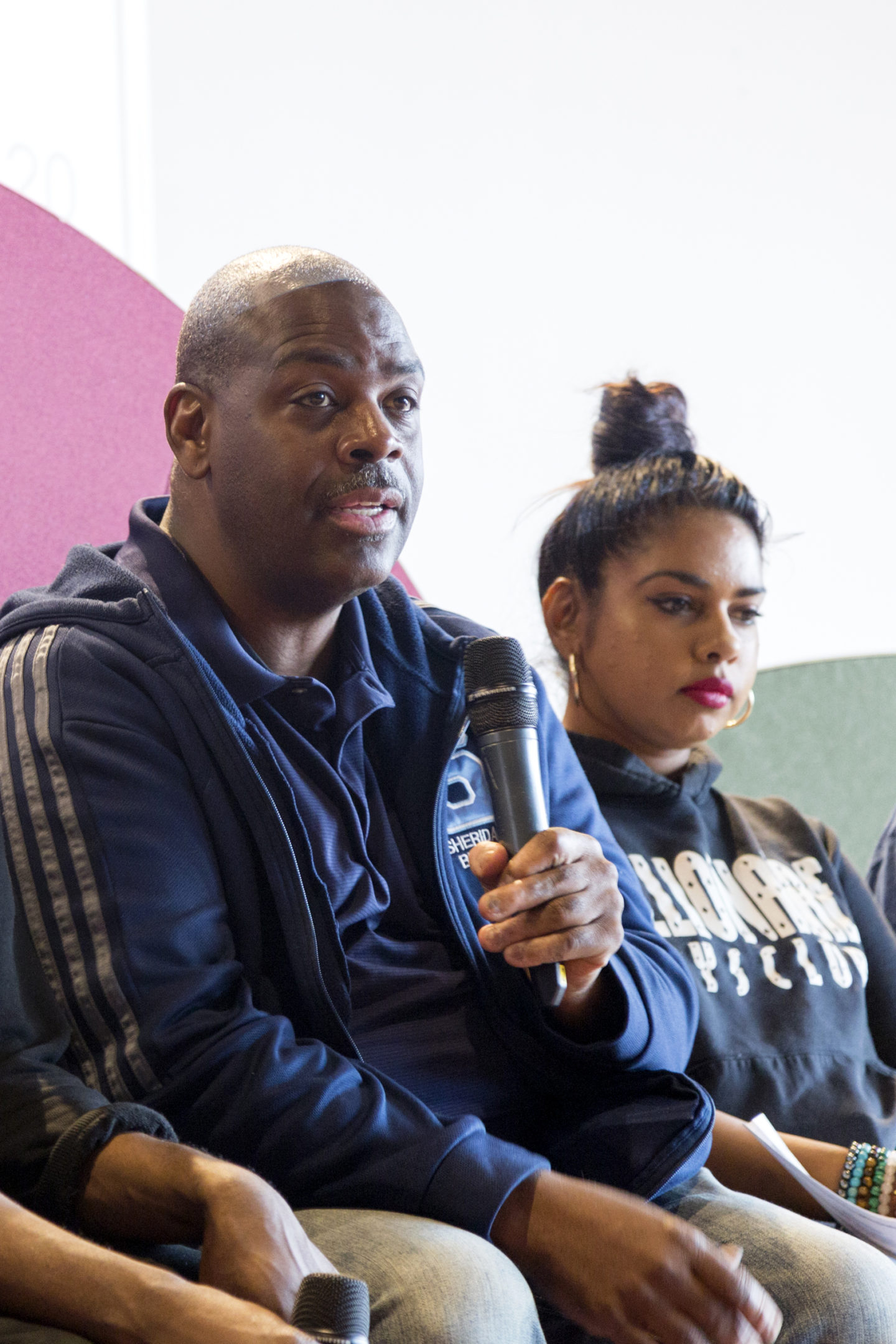
Nick Davis, manager of program development at CBC
What are some of the considerations to be taken?
Chris: One of the biggest considerations for me is archiving. I used to listen to “The Powermove Show” on a local college radio station (CKLN 88.1 FM) religiously. I was always by a radio on Saturdays from 1-4pm, most times tapping the show on a blank cassette.
It was a hip-hop show that was really shaping the culture in Toronto, and there was a lot of incredible moments that took place on-air from epic interviews and guest DJ sets, to mixes and conversations that were a part of the evolution of the Toronto Sound. One of the components of the show I think about a lot is “Eat the Beat,” where Emcees would call-in to compete in a live freestyle battle where the champ from the previous week would take on a challenger. Some of the most incredible, mind-blowing freestyles I’ve ever heard took place between guys like Bishop, Surely Dynamo and Adam Bomb, where they just went in on each other over the phone.
If I remember correctly, the winner would be decided by listeners who would call in after the battle to vote. If this show took place on CBC Radio, all of these moments would be archived and could be accessed and re-purposed. Because it took place on a college radio station, the only chance we have of ever hearing and accessing these moments again are possibly sitting on unlabeled cassettes in someone’s basement or garage. There is also the very real possibility that there are moments from that show that don’t exist anywhere. In that way, a cultural institution can be a like a time-machine in the way that they can preserve and present these moments of importance and significance. It gets me thinking about what is taking place now that needs to be documented and preserved in that way.
Kazeem: Archiving is so important. I love your idea of a cultural institution as a time machine. I have been documenting everything around me, from the art shows I go to, the artists, and whenever an artist is shy to get behind my lens, I tell them that it’s for the “archive” or the Rizzoli book I really want published one day. And I think that’s why platforms in Toronto like ISO RADIO, Blank Canvas and New Currency are important because we’re literally archiving the conversations, music, and art of this time.
What if you’re not permitted to enter because of gatekeepers and unwelcoming behavior?
Kazeem: This is why I champion the idea of DIY. Gatekeepers will block things because of their own personal biases, their perspectives or their view on whatever you’re trying to bring into an institution. Doing things yourself and playing within that field is where you can really prove yourself and also bring legitimacy to what you’re trying to create or offer.
My friend, Duane Bobbsemple, founder of Banded Purple, is a perfect example of someone who had to prove legitimacy by doing events DIY. and recently, he did a collaboration with the Museum of Contemporary Art (MOCA) in Toronto. It was a party that included video installations, visual art, classical performance and DJs and it was packed! Funny thing to note was that a lot of our homies that exist within our demographic didn’t even know that the MOCA existed before this event.
Chris: I think a lot about the sacrifices people like Duane, and so many of us, are making to prove the validity of what I feel like should be obvious initiatives to get behind. My mind also goes to how you communicate and leverage the value of how many people are exposed to spaces and cultural institutions through people that bring an authentic community they have built into the building.
The amount of conversations I had with people in our city about the MOCA in Toronto after Banded Purple was notable. And it wasn’t just a younger demographic. I was also hearing from people in the music industry who saw that and never had an art institution on their radar, but are now looking at some different possibilities in their own work. At the root of that unwelcoming behaviour is value. People treat who and what they value well.
We shouldn’t be surprised when we run into that behaviour though. I read an interview between Solange and Toyin Ojih Odutola in Cultured Magazine, where they talk about the pushback they have received working with cultural institutions. Solange specifically spoke about being invited by arts institutions to activate space, but she was left wondering whether they just wanted her there as an artist or just as an entertainer.
From the outside looking in, you see how her art and music are so transcendent and she has just set a new bar for what is conceivable. But reading this conversation, I was stunned to learn both Solange and Ojih Odutola have met so much resistance in fulfilling the visions they’ve had. If that’s what they are dealing with at the level they are operating at, then how can any of us expect to avoid it?
As a strategy, I really like what Cathy Gordon, Natasha Singh and Umbereen Inayet said about this on the CONVENE panel you were on. See the cultural institution as a power structure, learn how to navigate it, find someone on the inside that can help you with that, and if you aren’t the right person to convince the gatekeepers, then figure out who is.
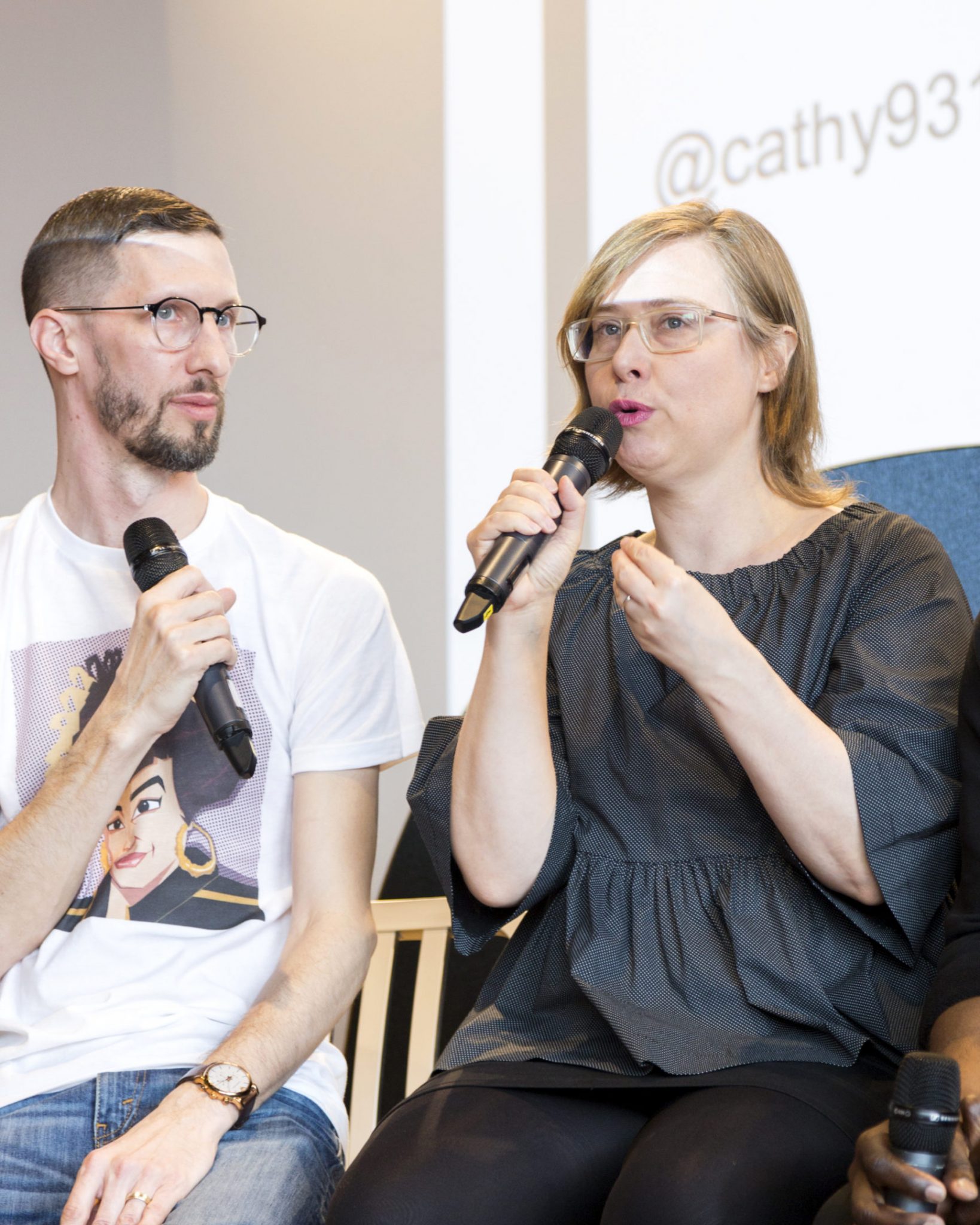
Cathy Gordon, multidisciplinary artist who does community engagement with Luminato Festival.
“Obstacles can be opportunities because sometimes they force you to drill down on what you really want and to think creatively about solutions, like how you might just do it yourself or do it to change somebody’s mind if you feel like that’s the obstacle. And if you know your voice isn’t going to get heard, then who is someone you can approach to be your supporter in the room?”
How do you structure a plan to collaborate?
Kazeem: I think setting expectations on both ends is important. I also think being transparent about what each party wants to gain from the collaboration is also key. Being empathetic to the fact there will be knowledge gaps on both ends due to maybe being from different generations, demographics or different cultural groups is important and finding a way on how each party can learn about each other is important. That kind of approach contributes to a better understanding of each other and a stronger collaboration.
Chris: Empathy and understanding are so important and take real work to achieve. We don’t talk about it a lot, but a big part of collaboration is leverage, power and respect. When we are looking at collaboration with cultural institutions, I think it is important to be honest with yourself about this.
What leverage do you have in this conversation? What is the balance of power in decision-making and shaping the vision? What is the level of respect they have for your work and what you bring to the table (from everyone involved in the project, not just the point of contact)?
I think that there can be stigma around naming things like leverage, power and respect, especially when you are talking about collaboration, which is such a positive word. Doing that kind of self-reflection is key to avoiding some of the conflicts and disappointments that can happen in collaborations. It can also be helpful in assessing whether that collaboration is right for you, or if the timing for it is now.
One huge lesson I’ve learned through collaborating with institutions that were just way bigger than anything I had done or was a part of was how important it is to be explicitly clear with all parties what success looks like. You can be aiming to create a new experience for audiences and they may be focused on numbers and the demographics of the audience, and at the end you might feel like it was a huge success and they are looking at it like it fell short of expectations or vice-versa.
This can even be down to your understanding of a word. There might be agreement that, “we want this to be innovative,” and that can mean technology to one party and challenging narrative forms to another. It’s just being clear, what does success look like in clear and measurable terms? And have that written down.
“Brands are going straight to creatives nowadays, so there’s a huge opportunity to pitch an idea. But if you’re going to pitch the idea, understand the person inside — internal — and get them to help navigate and understand how to pitch. Do some research and understand how agencies do it. What is a deck? What is going to be inside your deck? Study the industry of creative agencies and take those learnings into how you would want to pitch the idea to said brand.”
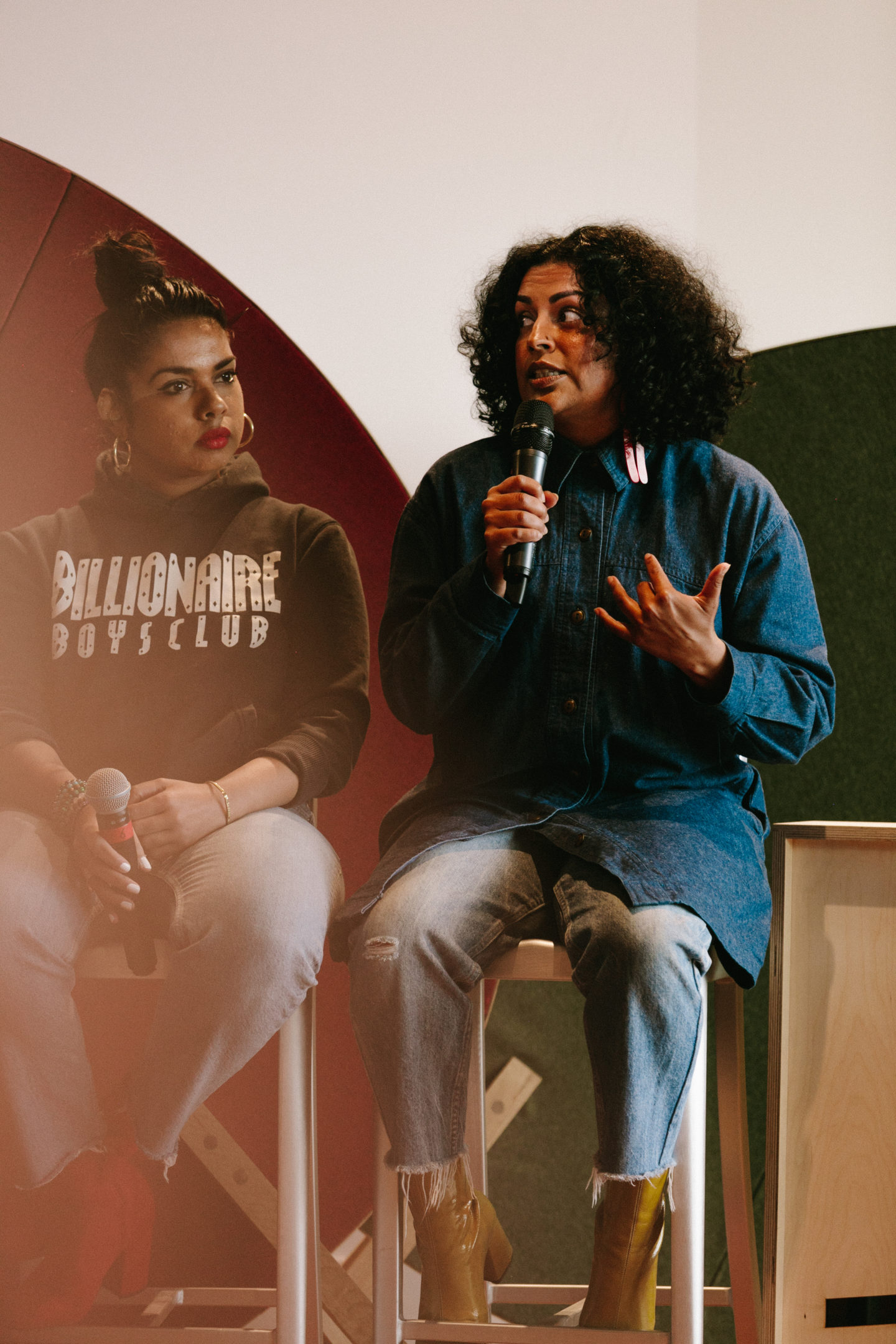
Natasha Singh, experiential marketing with Shopifygram development at CBC
Why should one aim to have in-roads into a physical space/world (versus residing only online)? What does one gain?
Kazeem: It all comes back to human connection. It’s much more impactful to connect with people in a space than online. People get to know your intentions and really understand who you are. For example, Grace Wales Bonner is a designer that I respect and I’ve known about her work for a long time. I’ve only really engaged with her work online whether that be swifting through photos on Dazed or Instagram. My love for her perspective in fashion grew deeper when I happened to be in London and visited Serpentine gallery for her show that she curated alongside Hans Ulrich Obrist. It was in this space that I was able to really understand her process, her research, and the meaning of what she is creating.
There is no way one can replicate that online. I actually felt the need to buy something because I connected with her message so much. I can also add that New Currency grew exponentially when we started doing panel talk events at a physical space we had access to. People began to understand our intentions and the purpose behind the existence of New Currency. Our global network grew not because of liking our friends photos on Instagram, but actually being on the ground in London, Paris, or Berlin, working, creating, and throwing a parties. Out that, friendships are formed and there is a mutual respect for one another. And I attribute this to having space to make things happen.
Chris: For me, digital is not the end, it’s a means to an end. Real people, spaces and ideas are the end. To me, creativity is about connecting people and ideas, and your experience of the Grace Wales Bonner exhibit is an example of the power of that. You went from admiring her work online, to connecting with her work in-person at her exhibit, to feeling like you needed to have a piece of her work in your life beyond the experience of the exhibit. It makes me wonder how whatever it is in you that her work is speaking to that you felt through the digital will be discovered over time. All of those days seeing that work in your space gives time for that deeper part of you that the work is stirring to unravel.
I wrote an article for a book called FOR THE RECORD about the foundational record shop in Toronto, Play De Record. What was amazing about this story is that I interviewed about 30 people – from Saukrates to Russell Peters – and everyone had unbelievable stories about the people they met through that record store and how many of the moments that shaped and shifted Hip Hop culture in Toronto were connected to that shop from the 90’s up to the present moment.
I also think a lot about the way you and your team working on New Currency out of a consistent physical space was the period of your most significant growth. Even though you are able to exist digitally and be global in your reach, that was amplified when you had somewhere that you could work out of regularly, do events in, and have unexpected run-ins. It’s really hard and really rare to build deep roots in a relationship, in a community or with a brand when you’re solely online. I also think that In an age where so much is available digitally, the value of physical space is increasing.
